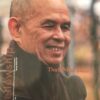No doubt planned to coincide with the presentation of the Advisory Commission Report, there was a series of attacks by a Rohingya faction on Myanmar police and army posts setting off a new cycle of violence as was easily predicted. At least 77 Rohingya and 12 members of the Myanmar security forces were killed in a pre-dawn strike on police posts. The Arakan Rohingya Salvation Army (ARSA) claimed responsibility for the attacks. The ARSA was formed by Rohingya living in Saudi Arabia. It is unlikely that a foreign group in Saudi Arabia can organize to carry out armed violence without the knowledge (if not the encouragement) of factions in the Saudi government. It is not clear what would be the Saudi advantage to increase religious tensions in Myanmar. Kofi Annan responed with good sense saying “The alleged scale and gravity of these attacks mark a worrying escalation of violence. No cause can justify such brutality and senseless killing. I strongly urge all communities and groups to reject violence. After years of insecurity and instability, it should be clear that violence is not the solution to the challenges facing Rakhine State.”
The “concerned action” of the Report sets out basic development goals such as infrastructure investment for roads, electricity, drinking water, schools and medical services. The same concerned action goals would hold true for nearly all areas of Myanmar, especially those with large national minorities such as the Kachen, Chin, Mon, Shan and others. The government breaks the population into 135 national ethnic groups, but it is not clear on what ethnographic criteria the divisions are made.
However, it was the increasingly sharp outcries concerning violence against the Rohingya by U.N. human rights bodies and non-governmental organizations which led to the creation of the Advisory Commission on Rakhine state. Some 80,000 Rohingya have fled to Bangladesh since October 2016 with reports of murders, gang rapes and burning of villages. The Advisory Commission is a national commission created in cooperation with the Geneva-based Kofi Annan Foundation and partly funded by the Foundation. Six members were citizens of Myanmar: two medical doctors, one Labour Ministry official who had experience dealing with the U.N. International Labour Organization, one Muslim leader, member of a Sufi order, one non-Rohingya from Rakhine state concerned with cultural policy, and a retired diplomat U Win Mra that I knew from when he was part of the Burma Mission in Geneva. The three foreign members were Kofi Annan, Chassan Salamé, a Lebanese professor at Science Po in Paris who held high posts in the U.N. and is now also part of the International Crisis Group. The third member was Laetitia van den Assen, a retired Ambassador of the Netherlands’ Ministry of Foreign Affairs.
Rakhine state is largely populated by two separate ethnic groups: the Rakhaines, largely Buddhist. They are part of what was a Magh kingdom, strong in the 15th century. The other major group are the Rohingya, mostly Muslim. Some have been living in the area for a long time, converts from Sufi Muslim missionaries in the 12th century. Many came into the area in 1666 when the Mughal governor of eastern Bengal defeated the Magh king. The governor settled Muslim, Bengali-speaking farmers in the area as a means of control. In 1826, the area come under the control of the British who governed from Calcutta. Bengali merchants and others followed the British administration which existed in practice until the start of the Second World War when the area was occupied by Japanese troops. Officially, in 1937 Burma was separated from British India and Arakan (as it was written then) became one of the states of the Union of Burma.
In the 1945-1947 period when England retook control of Burma, Burma was filled with weapons left behind by the retreating Japanese forces and weapons “lost” from the Allies on the Burma Road bringing arms and supplies to the Nationalist forces in China. In the lead up to independence in 1947, the Buddhist Maghs created an armed political group, the Thakin Party, and started attacking the Rohingya largely over land disputes. The Rohingya then created a number of armed groups, more or less coordinated by the Jihad Council.
While armed efforts by minorities along the frontiers with Thailand and China continued from 1947 until today, the 1960s was relatively calm in the Rakhine state. However, the 1970s saw a host of operations of the Burmese Army against Rohingya independence movements, with a large number of Rohingya fleeing into East Pakistan, now become Bangladesh. While the Rohingya political movements were basically concerned with greater autonomy within Burma (or the creation of a totally separate country) by the late 1970s an Islamic current started to grow. Contacts were made with Islamic movements in Bangladesh, India and the wider Middle East.
In 1982, for reasons unknown to me, the military government of Burma created a new “Citizenship Law” under which the Rohingya were stripped of their Burmese citizenship to become “illegal Bangladesh migrants”. No other national minority (Shan, Chin, Kachen etc) was treated in this way. Thus the Rohingya one million became the largest “stateless group” in the world. Bangladesh had no reason or interest in naming them citizens of Bangladesh. The Advisory Commission has called for a review and possible revision of the nationality law.
In 1991-1992, there was again a flow of Rohingya refugees to Bangladesh which led in December 1991 to clashes between Burmese and Bangladeshi forces followed by an incursion of Burmese troops into Bangladesh. Some 75,000 Burmese troops dug into the border, and the Burmese started refurbishing World War II airfields.
It was as a result of the 1991 military buildup that on behalf of the Association of World Citizens, I became concerned with the fate of the Rohingya. I had already been working with representatives of other Burmese minorities on a possible federal structure for Burma which would be acceptable to all ethnic groups. The balance between central authority and the autonomy of the regions is a crucial aspect of federalist theory.
Many of us hoped that the 2015 elections and the transition to a government less led by the military would lead to more enlightened policies and an end to armed violence. We are still waiting. The decision to implement – or not – the recommendations of the Advisory Commission rests with the government of Myanmar. The recommendations are those of good sense and would do little to modify the current balance-of-power within the country. The recommendations do give a legitimacy to efforts which can be carried out by non-governmental organizations and so should be widely discussed.







